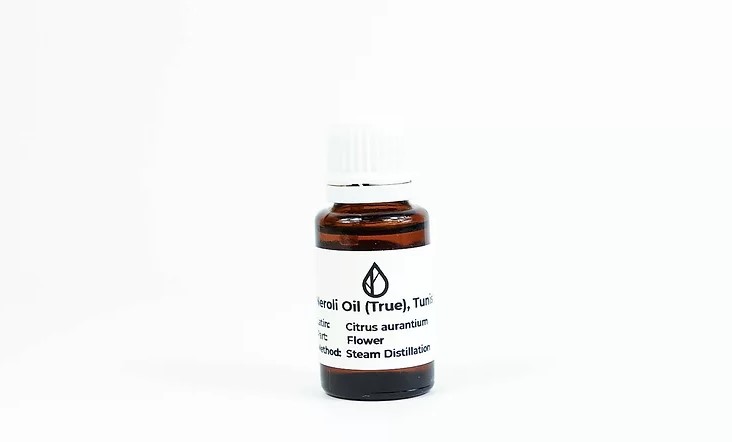Product Description
Latin Name: Citrus aurantium L, ssp. amara Engl., fam. Rutaceae
Part of Plant: Flower
Country of Origin: Tunisia
Method of Production: Steam Distillation

Neroli essential oil, also known as Orange Blossom oil, is produced from the fragrant white blossoms of the Bitter Orange tree. Citrus x aurantium, also known as Seville, Bigarade, or Bitter Orange, is an evergreen citrus tree that is a member of the Rutaceae botanical family. Native to southeast Asia, it is now cultivated in various countries around the world.
Neroli essential oil, known for its use in perfumery, blends well with other floral and citrus oils. It may assist with the appearance of skin when properly diluted and applied topically. It is also another oil that is known as a staple for many women. Try blending with oils like Sandalwood, Bergamot, Geranium, Wild Orange, or Clary Sage for a relaxing diffuser blend. It is popular in date night blends that may also include Damiana, Jasmine, or Rose. Also, consider blending with Peppermint and properly dilute for a cooling women’s massage blend.
Usage ideas:
- Add a few drops of essential oils to a diffuser, cotton round, or a tissue.
- Dilute to 1% in your choice of carrier oils to make a face serum or body oil. Apply a small amount to damp skin after washing to help seal in moisture.
- Add 5-15 drops to 1 oz. of your choice of carrier oils to make a massage oil.
- Mix a few drops with an unscented liquid soap or bubble bath and add to the tub when filling.
For convenience on the go…
- Properly dilute with your choice of carrier oils in a roller bottle.
- Add up to a total of 15 drops of essential oils to a personal aromatic inhaler (aroma stick).
Safety:
If you are pregnant, nursing, or under a doctor’s care, please consult with a healthcare professional prior to use. Avoid contact with eyes, inner ears, and sensitive areas. Keep out of reach of children and pets. If swallowed, seek medical attention or contact a Poison Control Center. Do not use undiluted essential oils topically. Possible skin sensitivity. Do not use on broken skin. Watch for any possible interactions or side effects. Discontinue use if any reaction including skin irritation occurs and if condition persists, seek medical attention. Be sure you are familiar with all safety precautions including any recommended dermal maximums before use.
DISCLAIMER:
This product is not intended to treat, cure, or prevent any disease. The information on this site is not intended to be a substitute for medical advice, diagnosis, or treatment, and is for educational and informational purposes only. These statements have not been evaluated by the U.S. Food & Drug Administration (FDA).
References:
Sheppard-Hanger, S. (1995). The Aromatherapy Practitioner Reference Manual. Atlantic Institute of Aromatherapy
Tisserand, R. and Young, R. (2014). Essential Oil Safety: A Guide for Health Care Professionals, Second Edition. Churchill Livingstone
Burfield, T. (2016). Natural Aromatic Materials: Odours & Origins, Second Edition. Atlantic Institute of Aromatherapy
